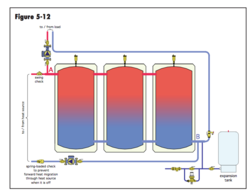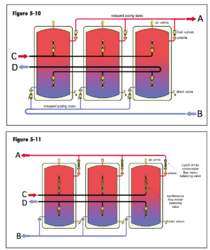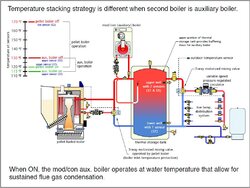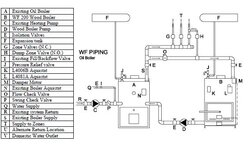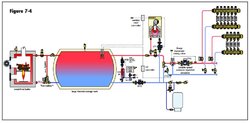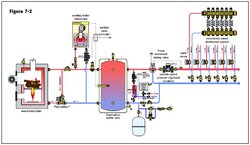Folks, I am in the process of trying to design an install of a new Gasifier wood boiler system to be mated with my existing oil boiler. Prior to doing anything I am attempting to calculate my homes heat loss.
I've seen several web based calculators but I have stumbled across the Taco FlowPro design software and have been playing around with it for a few days now. I've sketched my floor-plan in the software and came up with a heat loss of 33800 btu/hr. Can someone please tell me if this seems out to lunch or is it reasonable.
My home is approx 15 years old, single story with basement consisting of 8' concrete walls. The home is constructed of typical building standards of the time, 2x6 framing, insulated R12 walls, R20 ceiling. The home is 1653 sq ft on main level and same in basement. windows are dual pane single, average size of windows are 35w x 60"h and there are about of these on the main level. Other items are the normal insulated steel doors, patio door....etc.
I know this is a tough question to answer and im not expecting anyone to sit down to calculate this but just wondering if this seems like a reasonable number. I have been looking at the Attack DPX boilers and been in discussion with New Horizon in the US and they are thinking that the DPX 35 with 500 gallons of storage will be fine but this seems a little small to me......but im no expert by any stretch.
I am currently heating the home with a New Yorker WF 100 wood boiler and does just fine but its not very efficient thus the upgrade.
I have attached a floor plan of both the main level and basement showing the heat loss calc for both levels.
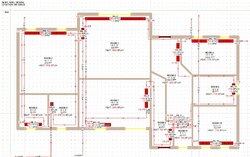
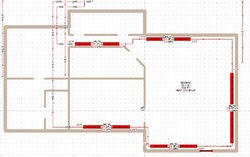
Anyway any info you guys can provide would be great. Thanks in advance.
I've seen several web based calculators but I have stumbled across the Taco FlowPro design software and have been playing around with it for a few days now. I've sketched my floor-plan in the software and came up with a heat loss of 33800 btu/hr. Can someone please tell me if this seems out to lunch or is it reasonable.
My home is approx 15 years old, single story with basement consisting of 8' concrete walls. The home is constructed of typical building standards of the time, 2x6 framing, insulated R12 walls, R20 ceiling. The home is 1653 sq ft on main level and same in basement. windows are dual pane single, average size of windows are 35w x 60"h and there are about of these on the main level. Other items are the normal insulated steel doors, patio door....etc.
I know this is a tough question to answer and im not expecting anyone to sit down to calculate this but just wondering if this seems like a reasonable number. I have been looking at the Attack DPX boilers and been in discussion with New Horizon in the US and they are thinking that the DPX 35 with 500 gallons of storage will be fine but this seems a little small to me......but im no expert by any stretch.
I am currently heating the home with a New Yorker WF 100 wood boiler and does just fine but its not very efficient thus the upgrade.
I have attached a floor plan of both the main level and basement showing the heat loss calc for both levels.


Anyway any info you guys can provide would be great. Thanks in advance.


